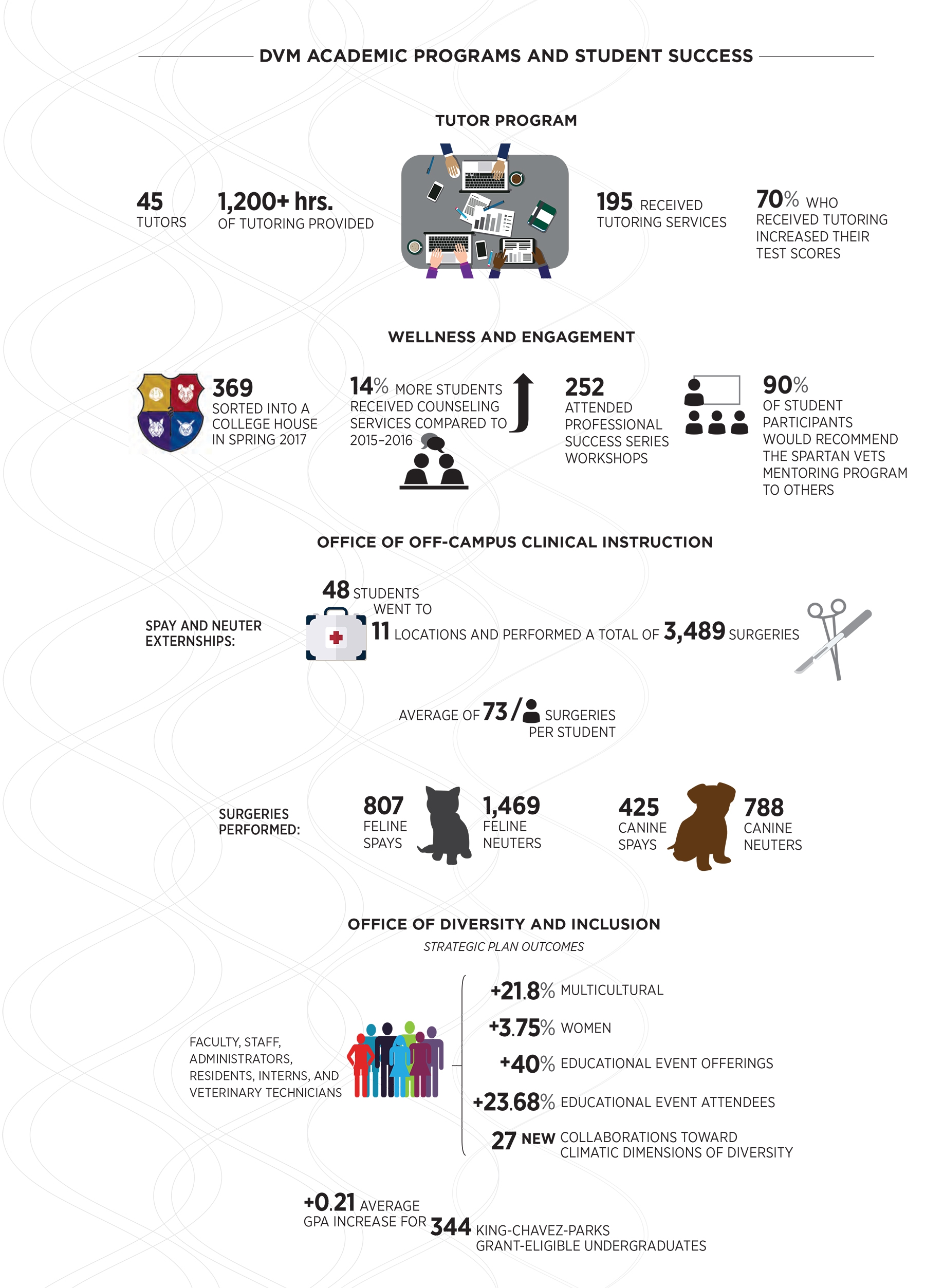In 2016, the College began the process of reinventing the DVM curriculum, which has had no major revisions since 1992. The goal is to create a cost-effective, learner-centered program that accounts for student welfare while preparing career-ready graduates who are highly valued by potential employers and competent on day one of employment. Upon graduation, students will be ready to holistically and dynamically connect and collaborate with colleagues, clients, and the broader discipline of veterinary medicine.
The reinvented four-year curriculum will be competency based and feature an integrated sequence of courses, with opportunities to practice technical, cognitive, and clinical skills during the first three years. This will prepare students for career-specific emphasis in their fourth year.
“The first and second years will be mostly systems based; the length and the content of individual courses will be guided by competencies,” explains Dr. Jon Patterson, professor for the Department of Pathobiology and Diagnostic Investigation and member of the Curriculum Reinvention Steering Committee. Patterson also led the Student Assessment Working Group during the first year of planning for the reinvented curriculum. “The third year emphasizes developing clinical reasoning skills, honing technical and diagnostic skills, and selecting appropriate treatments. The fourth year focuses on developing proficiency in an area of career interest. The reinvented curriculum includes a total of 54 weeks of clerkship experience.”
“Other colleges of veterinary medicine are watching us. Others have revised their curricula to emphasize more active learning strategies, but the scale of our curriculum reinvention is unprecedented.”
After the College faculty approved the curriculum model proposal in April 2017, the Competencies Working Group compiled more than 800 competencies as suggested by the faculty and organized them into proposed new courses. The College Curriculum Committee decided on the order of the courses and the number of credits for each course; the number of credits is based on the number of competencies assigned to a course while taking into consideration the amount of time devoted to a given topic or body system in the current curriculum. Course moderators and teams have been identified for all year-one courses, the development of which will be completed by June 2018; the new curriculum starts for incoming first-year students in fall 2018.
“Other colleges of veterinary medicine are watching us,” Patterson says. “Others have revised their curricula to emphasize more active learning strategies, but the scale of our curriculum reinvention is unprecedented.”























